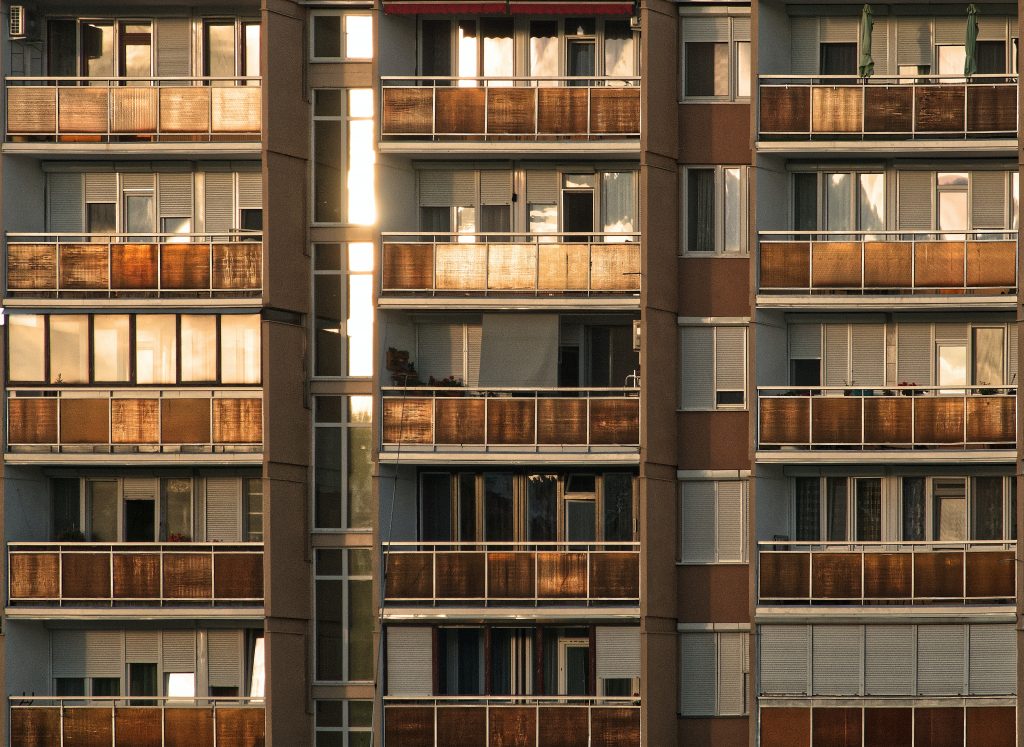The https://english.atlatszo.hu use cookies to track and profile customers such as action tags and pixel tracking on our website to assist our marketing. On our website we use technical, analytical, marketing and preference cookies. These are necessary for our site to work properly and to give us inforamation about how our site is used. See Cookies Policy
Almost ten percent of municipally owned houses are unoccupied in Budapest
Housing crisis is getting more and more serious in Hungary. According to surveys, nearly 2 million people live in housing poverty but at the same time, public housing programmes fail to offer help to those in need. 9,7% of the properties owned by the municipality are currently vacant and unexploited.

The current system doesn’t help those in need
Habitat for Humanity Hungary publishes annual reports on housing poverty in Hungary. This year the report focused on the topic of energy poverty, affordability and housing related expenditures in the state budget.
The NGO defines housing poverty according to four main aspects: tenure status, affordability, spatial accessibility and housing quality. The main trends remained the same as before: we could see how the prices are increasing and the house market is becoming more polarised, which will eventually deepen the housing crisis.
One of the main conclusions of the report was the lack of central measures and a complex, unified policy approach in connection with public housing. Another interesting figure is that the central state has spent eleven times as much on socially non-targeted housing benefits last year -such as the Family Housing Support Program (CSOK)- as on need-based benefits. This means that the current measures mainly offer support for the middle class, and fail to help those who would really need it.
The constantly diminishing public housing stock is also responsible for the crisis. Currently only 2.6% of the total housing stock is owned by the local municipalities, which means roughly 115,000 properties out of 4 million homes, and their proportion is constantly declining. In Western Europe, this figure is generally much higher, around 4-6%.
Most of the dwellings are in poor condition, requiring partial (37,8%) or complete (21,9%) renovation, and 10% of them are in a condition that they are simply no longer worth renovating.
Last year, 24.hu published an article about the public housing stock in the capital. At that time, almost 4000 houses owned by the local municipalities were unused and vacant. We wanted to know how exactly this number changed in a year so we requested data from the 23 municipalities.
The data provided by the municipalities shows the state of housing stocks in the first half of 2020, with the exception of district XIII., who informed us that they only keep annual records so the latest data they could provide was from the end of 2019.
Many properties are in poor condition
A total of 38,114 apartments are currently owned by the municipality, most of them located in the 3rd, 8th, and 13th district. District 2, 16, and 23 have the smallest real estate asset.
District X. is in a special situation regarding the change in the number of houses, as more than 200 properties were withdrawn from the housing stock in one year. The municipality explained that most of the dwellings were situated in industrial facilities or had to be removed from the stock due to their poor condition.
Out of the 38 000 properties, 3698 dwellings are uninhabited, which means that 9.7 percent of all municipally owned homes are vacant and unutilized at the moment. The number of vacant dwellings is the highest in district VIII., where 20% of all municipally owned houses are not in use currently. The proportion is also high in district VII., and IX.
District XIII.is a positive example in every aspect, not only because it owns the most real estates in the capital, but also because they utilize every single one of them. On the other hand, district 23. has the fewest flats in Budapest (only 45) among which 13 is currently uninhabited.
In most cases the reason for the vacancy of properties is their poor condition. Typically, disused properties require proper renovation, but it is also not rare that they have become totally unsuitable to rent them in the future. Some of the municipalities also added that these dwellings are usually located in a building awaiting renovation, evacuation or demolition, thus they cannot be used at the moment.
In this respect, the situation of district X. is a bit different: due to the demolition of the infamous blocks in Hős Street, the municipality has renovated several properties in order to offer them as a replacement flat to the owners. We have also dealt with the situation of these blocks in our article:
The deadline was the end of 2020, but the infamous blocks in Hős Street are still standing
Originally the deadline for the 2,1 billion HUF (5,8 million €) non-refundable government aid that the municipality of Kőbánya has received for the demolition of the two blocks in Hős Street was the end of 2020.
Not every district could provide accurate data regarding the change in the number of vacant, but in theory habitable houses. According to our calculations, approximately 667 flats fall into this category, which means that only 18% of the uninhabited dwellings could be utilized for renting.
However, this also means that in the case of maximum utilization, housing could be provided for nearly 2 thousand people with the currently vacant properties.
We also wanted to know what was the reason for the change of the public housing stock, so we asked the municipalities about the number of recently built, sold or purchased houses from 2018 to 2020.
During the last 2,5 year 829 houses were sold by the municipalities, which is not a lot, yet, the number of purchased or built properties is a lot lower, which can provide an explanation for the constantly diminishing public housing stock.
At the same time, the number of new houses also grew: the municipalities have built 76 new houses and purchased another 90. District VII. sold most of the dwellings and the number of newly built houses was the highest in district XIII.
We also gathered information about the court-ordered evictions of the tenants living in municipal properties. Within 2,5 year altogether 104 evictions were ordered in the capital, most of them in district X. District 23 got the best results because no eviction took place there.
The pandemic also made the situation worse
The global coronavirus pandemic has put municipalities in a difficult position as the government has subtracted significant resources from them in the name of fighting against the pandemic. District VIII. for example, has experienced 1,125 billion HUF deduction, among which 600 million would have been spent on the development of public housing.
Apart from the municipalities, local NGOs also play an important role in resolving the housing crisis. From Street to Homes Associaton (ULE) has several programmes which could provide housing for those in need. They renovate vacant, run-down municipal apartments with the help of volunteers to where homeless people could move in later.
Their From Huts to Homes! programme has provided 19 houses so far in district X., XIX. and XX. However, they face several difficulties during their work, sometimes even from the municipality itself. In district XXIII., they failed to finish their project in which they started the construction of a row house. Because of complains from the public, the mayor has issued a decree banning alterations in the area. He added that no homeless shelter could be built in the district centre as long as he is the mayor. This caused 15 million HUF damage to the Association, said its president, Vera Kovács.
Written and translated by Zita Szopkó. The original, Hungarian version of this article can be found here.
The cover photo is an illustration. Credit: unsplash.com


